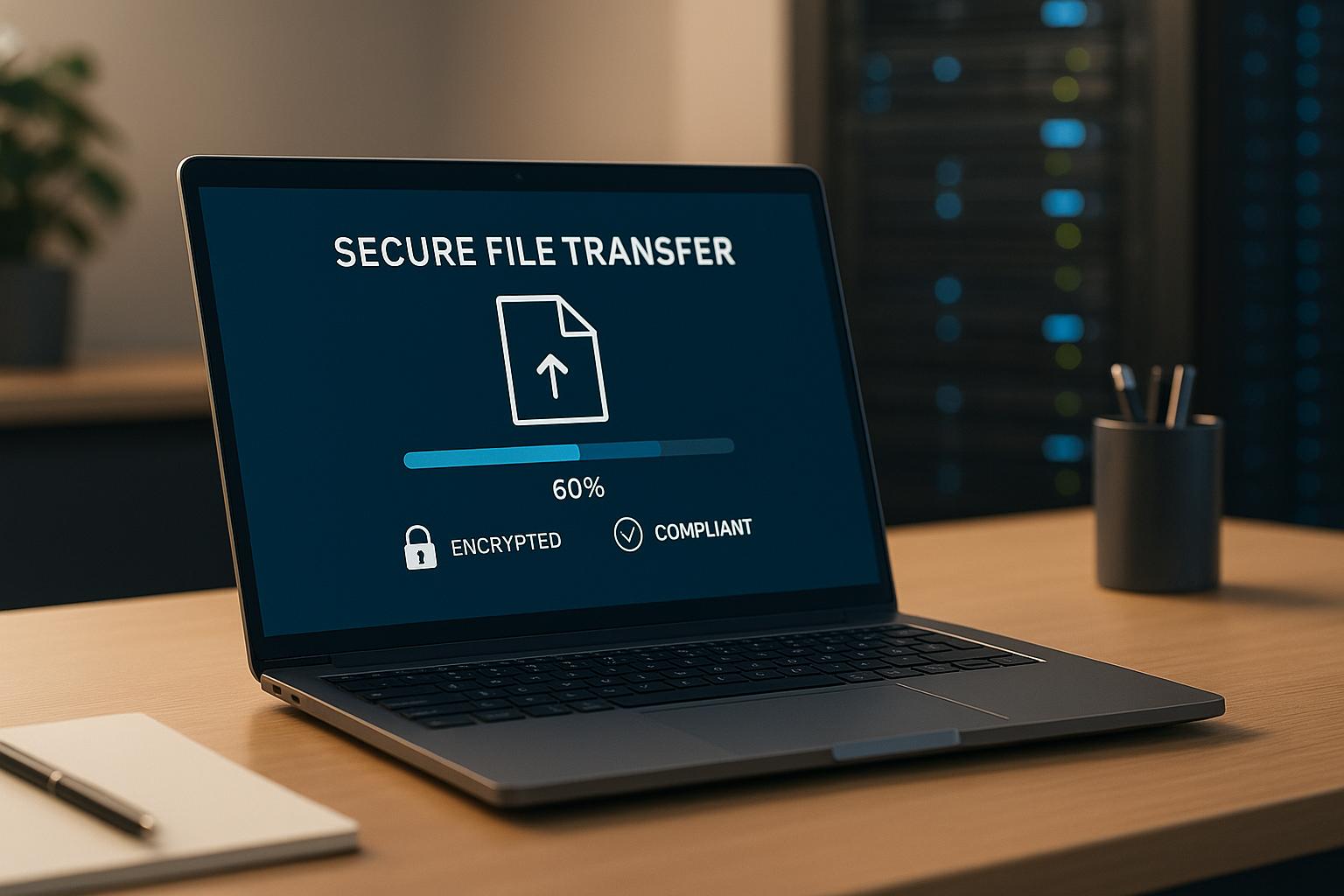Clearance campaigns are essential for e-commerce brands to sell excess inventory and boost revenue. The most effective ones leverage email marketing with tailored messages, urgency tactics, and mobile-friendly designs. This article explores five successful case studies, highlighting the strategies that worked:
- Hatstore: Used live stock counters and regional timing for tiered discounts.
- Dollar Shave Club: Focused on exclusivity with subscriber-only deals.
- Domino's: Combined countdown timers with multi-channel messaging.
- Rakuten 24: Designed app-like emails for a mobile-first audience.
- FreestyleXtreme: Personalized countdown timers for individual customers.
Key Takeaways:
- Audience Segmentation: Tailor messages based on customer behavior and preferences.
- Urgency: Use countdown timers and stock scarcity to drive immediate action.
- Mobile Optimization: Ensure emails are easy to read and act on from any device.
These case studies demonstrate how smart planning and execution can turn clearance campaigns into major success stories.
How to Combine FOMO and Urgency to Bring People Back to Your Store
What Makes Clearance Email Campaigns Work
Clearance email campaigns succeed when they tap into customer psychology and are timed just right. The brands that see the best results follow three key principles to drive customer action: knowing their audience, creating a sense of urgency, and optimizing for mobile.
Audience Segmentation and Targeting
Segmenting your audience thoughtfully - based on purchase history, browsing behavior, or engagement levels - ensures the right message reaches the right people. For example:
- VIP customers might appreciate early access to clearance deals.
- New customers could respond better to introductory discounts.
- Price-sensitive shoppers often need steeper markdowns to make a purchase.
Geographic segmentation is another crucial factor, especially for U.S.-based retailers. A clearance email sent at 9:00 AM EST may hit West Coast customers at 6:00 AM PST, potentially lowering open rates if not timed properly.
Behavioral segmentation goes even deeper. If someone tends to buy winter coats in November, they’ll react differently to a clearance email than someone who waits until February for the biggest discounts. Tailoring your message to these patterns can significantly improve engagement.
Once your audience is segmented, urgency tactics can help push them toward action.
Creating Urgency and Scarcity
Urgency is a powerful motivator, and the best clearance campaigns use it effectively. Techniques like countdown timers, limited stock messages, and tiered urgency create a sense of “buy now or miss out.”
- Countdown timers: A real-time clock showing "24 hours left" adds a visual push, making deadlines feel immediate and tangible.
- Limited stock messages: Phrases like "Only 12 left in stock" emphasize scarcity, especially since clearance items are often one-time deals.
- Tiered urgency: Combining time limits with stock scarcity - like "48-hour flash sale - while supplies last" - doubles the pressure, encouraging quicker decisions.
Together, these tactics create an environment where customers feel compelled to act immediately.
Mobile Design and Optimization
With most emails now opened on mobile devices, ensuring your clearance campaigns are mobile-friendly is non-negotiable. Success goes beyond just making emails look good on small screens - it’s about making them easy to navigate and act on.
- Subject line optimization: On mobile, where space is tight, the most effective subject lines highlight key details - like discounts or deadlines - within the first 30-40 characters to grab attention immediately.
- Single-column layouts: Simplicity is key. A clean, single-column design ensures the email is easy to read and guides the eye directly to the call-to-action button.
- Thumb-friendly buttons: Large, well-spaced buttons make it easy for users to tap without frustration, especially when multiple "Shop Now" options are included.
- Fast loading times: Clearance shoppers often make quick decisions, so heavy images or animations that slow down the email can hurt conversions.
5 Clearance Campaign Case Studies
These e-commerce brands showcase how well-planned email campaigns can turn year-end inventory challenges into revenue-boosting opportunities. Each example brings to life key strategies like audience segmentation, creating urgency, and optimizing for mobile users. Here's how they made it work:
Hatstore: Scarcity Meets Tiered Discounts
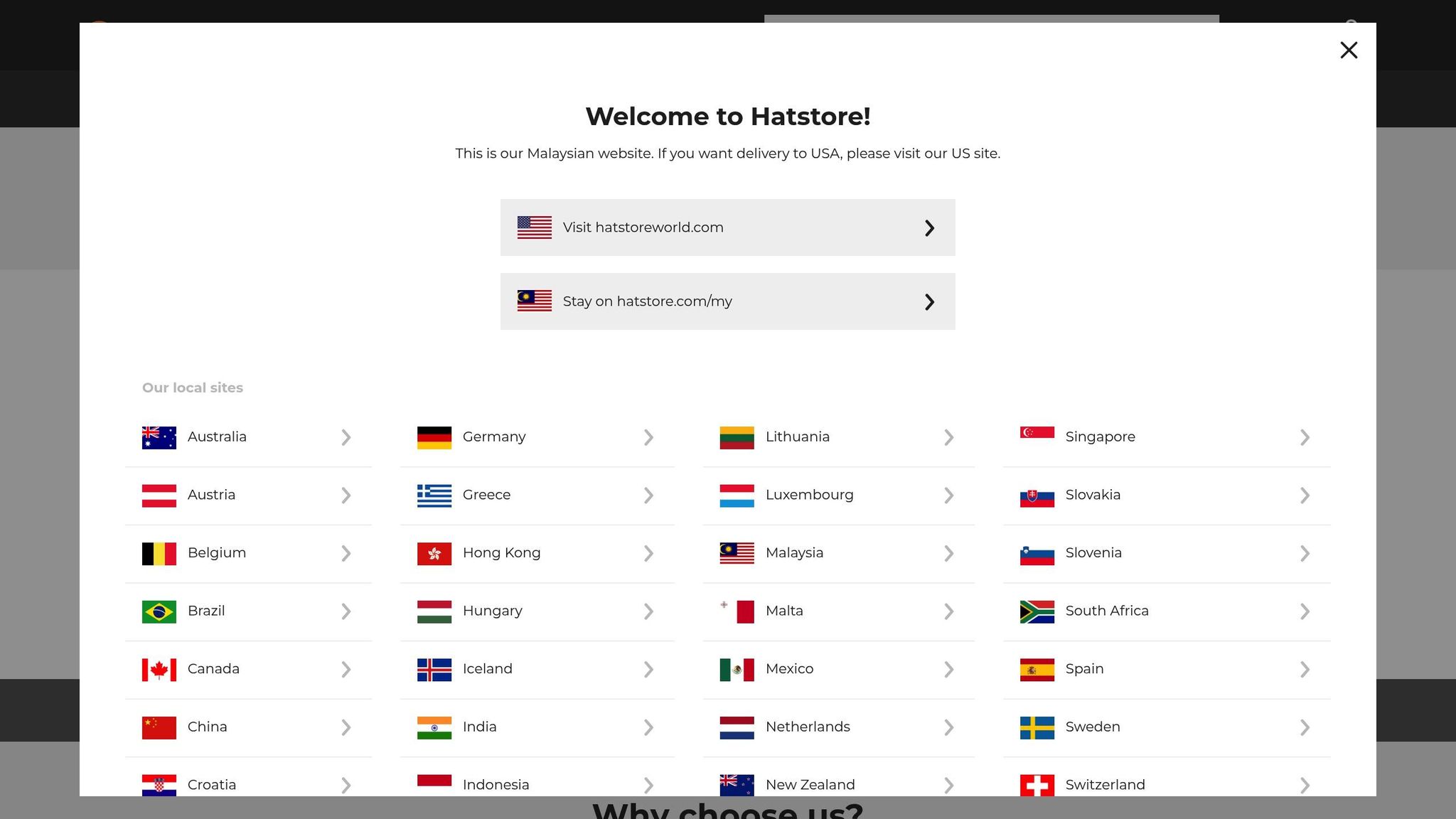
Hatstore, a European retailer specializing in headwear, tackled their seasonal inventory with a clever mix of live stock counters and tiered discounts. Their emails highlighted remaining stock levels in real time, paired with discount structures that rewarded quick purchases. By timing their emails to align with peak shopping hours in different regions, Hatstore not only increased customer engagement but also maximized their clearance sales. This campaign is a great example of how scarcity and well-planned timing can drive results.
Dollar Shave Club: Exclusive Subscriber Deals
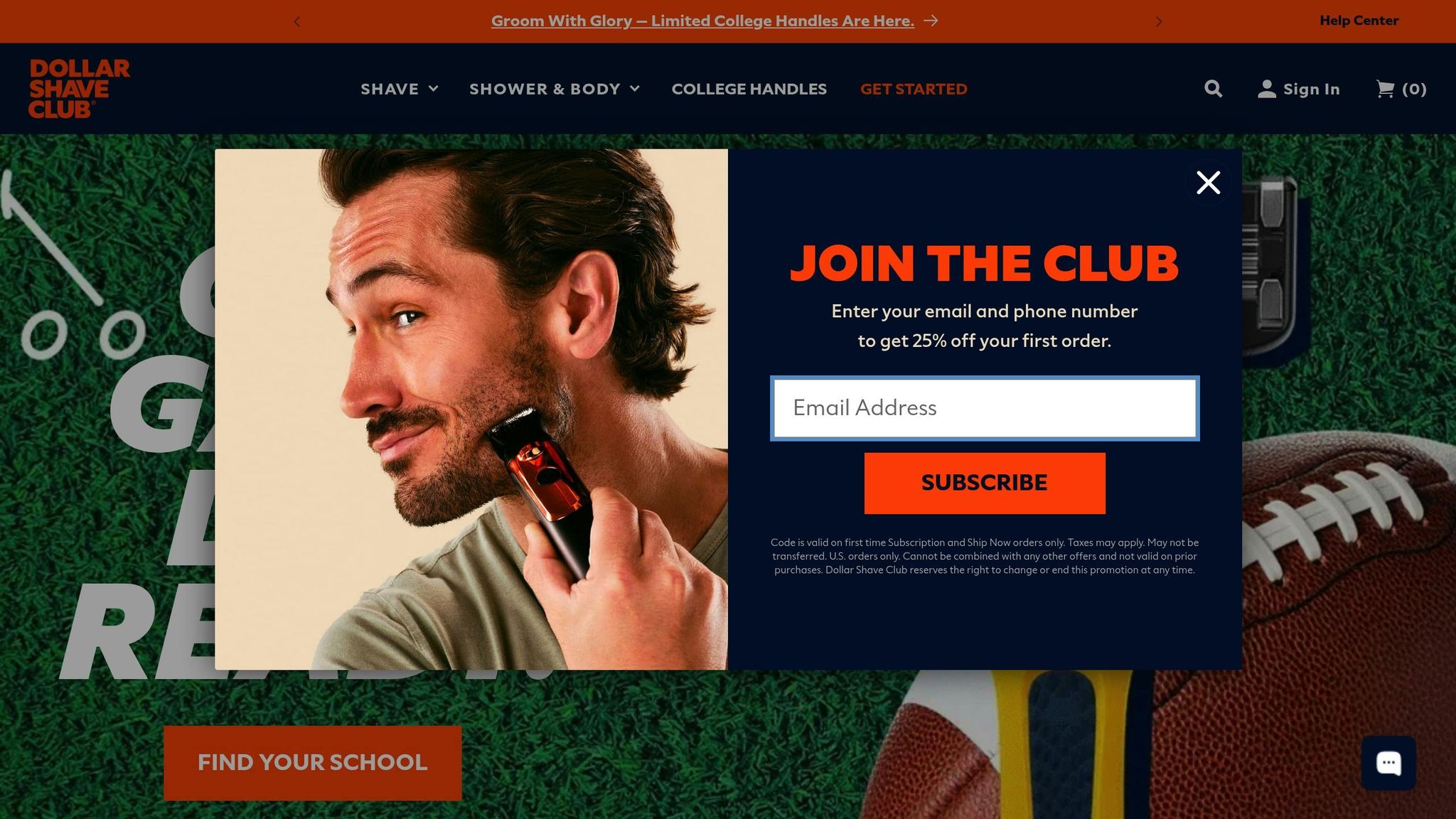
Dollar Shave Club leaned into exclusivity with their "Members Only Vault Sale." They kicked things off with a teaser email that hinted at limited-time, subscriber-only pricing. The campaign featured large, easy-to-tap call-to-action buttons, making it simple for subscribers to explore the hidden deals. By focusing on their core audience, Dollar Shave Club strengthened customer loyalty while driving engagement. This shows how exclusivity can make subscribers feel valued and motivated to act.
Domino's: Urgency Across Multiple Channels
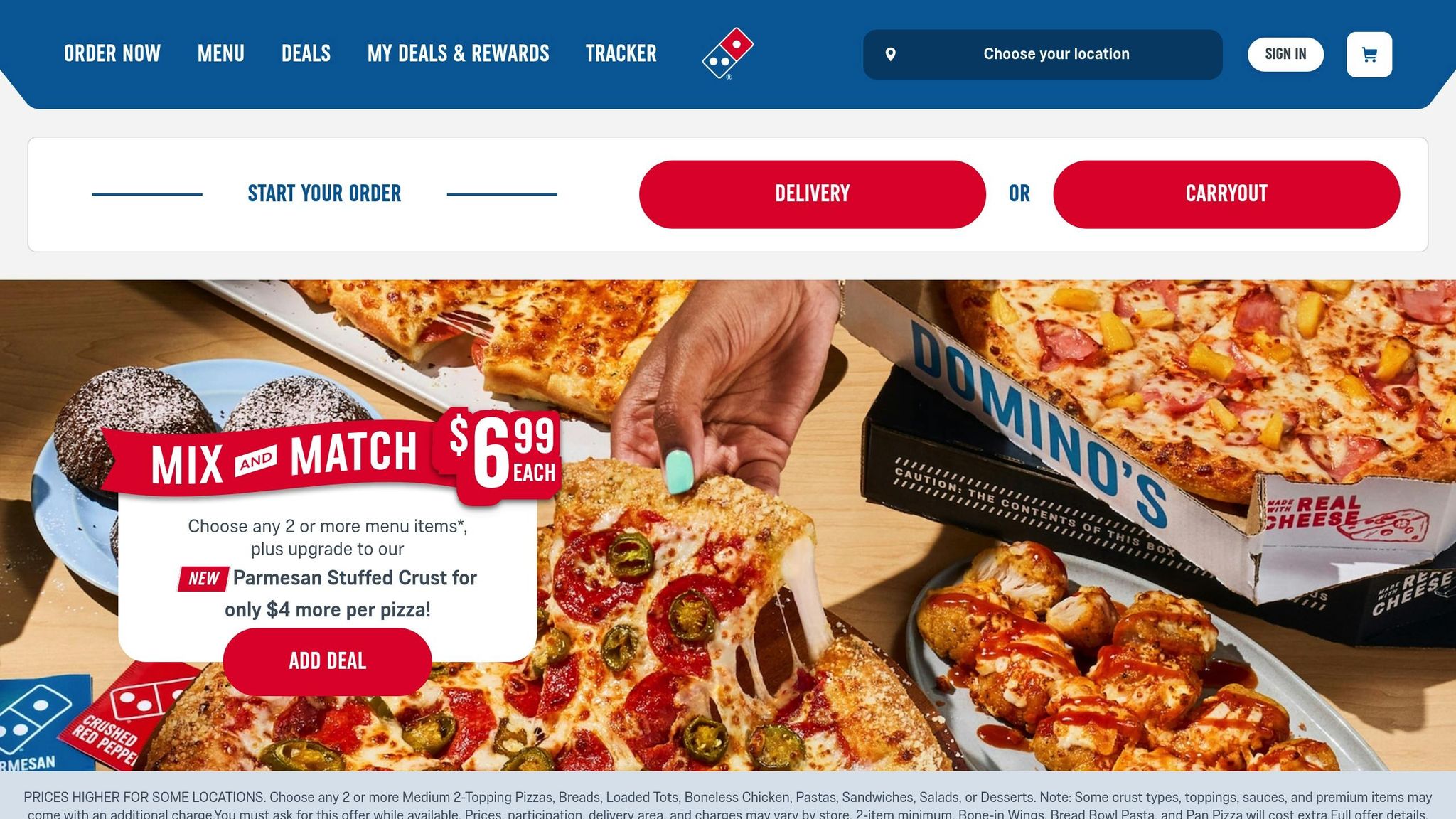
Domino's Pizza demonstrated the impact of using multiple channels to amplify urgency. Their emails featured countdown timers and were paired with coordinated messages across the mobile app, social media, and SMS. By segmenting their audience, Domino's ensured that their clearance messaging reached the right customers through the most effective channels. This multi-channel strategy highlights how combining urgency with broad reach can make a clearance campaign hard to ignore.
Rakuten 24: Mobile-First Design for Clearance Success
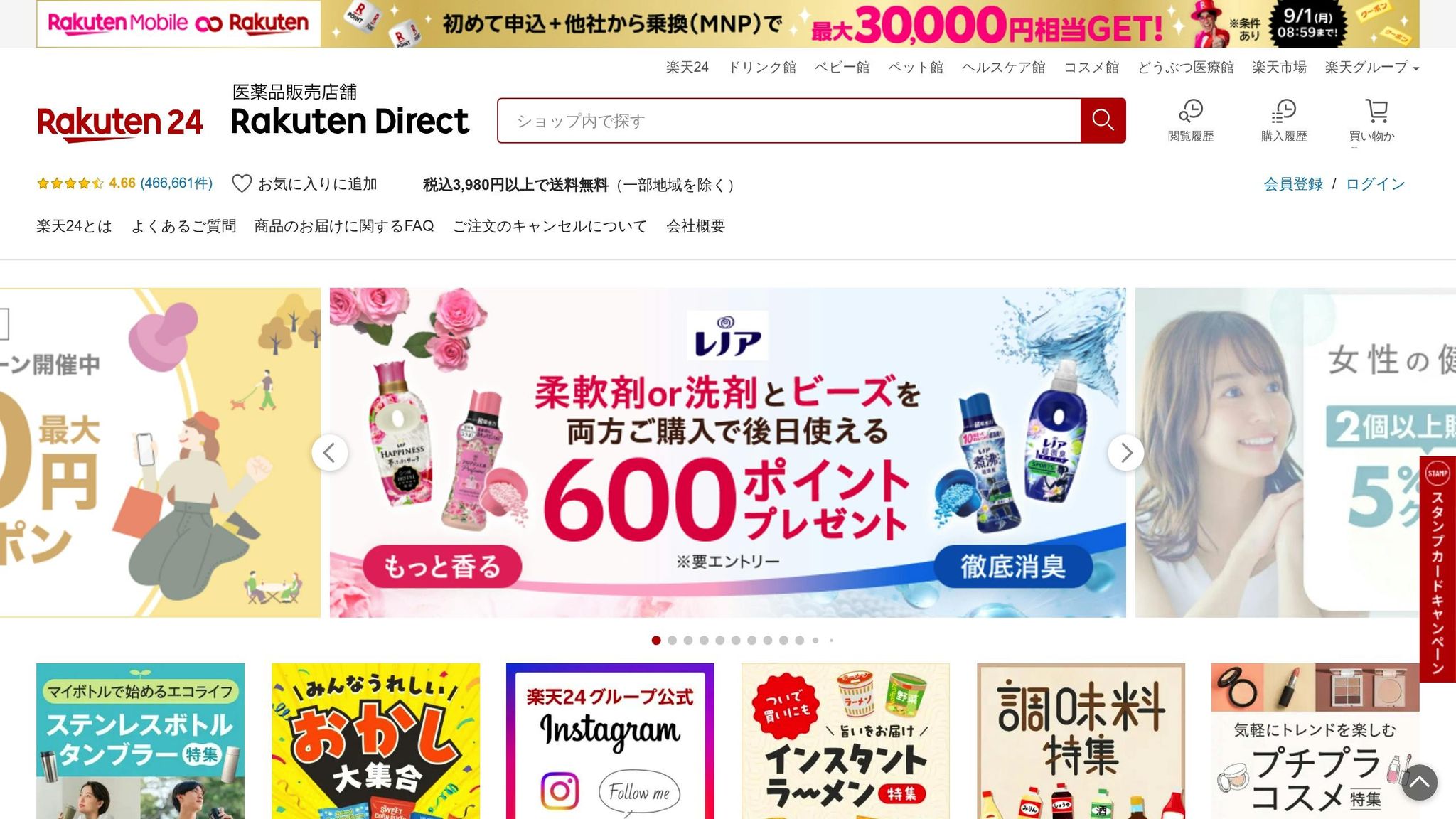
Rakuten 24 focused on their mobile audience by designing emails that mimicked a mobile app interface. These emails used a vertical card layout, complete with clear visuals, updated pricing, and an "Add to Cart" button for seamless shopping. They also included personalized product recommendations based on browsing and purchase history, along with subtle urgency cues like progress bars showing deal popularity. This mobile-first approach made it easy for customers to engage and act quickly, proving the importance of user-friendly design in clearance campaigns.
FreestyleXtreme: Personalized Timers Drive Action
FreestyleXtreme took a personalized approach by including individual countdown timers in their clearance emails. Each timer created a unique window for customers to access exclusive deals. Follow-up emails were sent to those who showed interest but hadn’t completed a purchase, extending their opportunity to buy. Combined with tailored product recommendations and behavioral triggers, this strategy created a sense of urgency that felt personal and compelling. It’s a smart way to make customers feel like the offer was made just for them.
Campaign Strategy Comparison
When comparing these campaigns side by side, it’s clear that each brand tailored its approach to fit its audience and brand identity. While the ultimate goals - clearing stock and driving revenue - were the same, the methods differed significantly.
Strategy and Results Comparison Table
| Brand | Primary Tactic | Discount Structure | Personalization Level | Mobile Optimization | Key Results |
|---|---|---|---|---|---|
| Hatstore | Live stock counters + regional timing | Tiered discounts based on purchase speed | Medium - regional segmentation | Standard responsive design | Increased engagement through scarcity messaging |
| Dollar Shave Club | Subscriber exclusivity | Members-only vault pricing | High - subscriber-focused content | Large tap-friendly CTAs | Strengthened customer loyalty and engagement |
| Domino's | Multi-channel urgency | Time-limited offers | High - audience segmentation | Coordinated across app and email | Broad reach with hard-to-ignore messaging |
| Rakuten 24 | App-like email design | Updated pricing with visual emphasis | Very high - browsing/purchase history | Mobile-first vertical card layout | Seamless mobile shopping experience |
| FreestyleXtreme | Individual countdown timers | Personalized exclusive deals | Very high - individual timer windows | Behavioral trigger optimization | Personal, compelling urgency for each customer |
This table highlights how distinct tactics shaped the outcomes of each campaign.
Key Takeaways from the Strategies
Hatstore and Domino's leaned heavily on urgency to drive action. Hatstore used scarcity messaging with live stock counters and tiered discounts to encourage quick decisions, while Domino's employed time-sensitive offers across multiple platforms, ensuring their messaging reached a broad audience.
Dollar Shave Club found a balance by focusing on exclusivity. By creating a "members-only" feel with subscriber-focused content and special pricing, they strengthened loyalty and engagement without relying on steep discounts.
On the other hand, Rakuten 24 and FreestyleXtreme went all-out with personalization. Rakuten 24 emphasized mobile-first functionality, creating an app-like experience with visually striking pricing updates. Meanwhile, FreestyleXtreme took a more psychological approach, using personalized countdown timers to create urgency tailored to individual customers.
Pricing and Mobile Strategies
The discount structures reveal different philosophies. Hatstore rewarded fast action with tiered pricing, while Dollar Shave Club and FreestyleXtreme used exclusivity as their main draw, rather than relying on major price cuts. Domino's and Rakuten 24 kept their pricing simple and easy to grasp, ensuring clarity across all channels.
Mobile strategies were especially varied. Rakuten 24 stood out with its app-like email design and mobile-first layout, making the shopping process seamless. FreestyleXtreme focused on behavioral triggers to create a highly personalized mobile experience. The other brands opted for more traditional responsive designs, with Dollar Shave Club standing out for its large, tap-friendly call-to-action buttons.
Final Thoughts
These campaigns demonstrate the importance of understanding your audience and aligning strategies with your brand’s strengths. Some brands thrived by fostering exclusivity, while others leveraged personalization or urgency to drive results. Whether through mobile-first designs, psychological triggers, or straightforward messaging, each approach showed how tailored tactics can maximize clearance success.
sbb-itb-6e7333f
Choosing Email Marketing Platforms for Clearance Campaigns
To run successful clearance campaigns, having the right email marketing platform is just as important as crafting the perfect strategy. The best platforms offer advanced tools for automation, targeting, and personalization, all of which help create the urgency and tailored experiences that drive results.
Platform Features You Need
When choosing an email platform for clearance campaigns, look for these key features:
Advanced Segmentation Capabilities
Segmentation is the backbone of personalized marketing. Your platform should let you create audience segments based on factors like purchase history, browsing behavior, location, and engagement levels. This ensures your messaging is relevant and tailored to each customer.
Real-Time Automation and Triggers
Automation takes your campaigns to the next level by responding to customer actions in real time. For example, FreestyleXtreme used countdown timers tailored to individual shoppers. To achieve this, your platform needs to support behavioral triggers, abandoned cart recovery, and dynamic content that updates based on a customer's actions.
Mobile-First Design Tools
With most users checking emails on their phones, mobile optimization is a must. Rakuten 24’s app-like email design succeeded because their platform offered advanced mobile-friendly tools. Look for platforms with drag-and-drop mobile editors, responsive templates, and built-in preview features to ensure your emails look great on any device.
Deliverability and Scalability
Clearance campaigns often involve sending a massive volume of emails in a short time. Your platform needs the infrastructure to handle this while maintaining high deliverability rates. Features like dedicated IPs, spam testing tools, and proven performance during peak periods are essential.
Integration Capabilities
Your email platform should seamlessly connect with the rest of your marketing tools. Domino’s success with multi-channel clearance campaigns relied on integrating their emails with app notifications, SMS, and social media ads. Choose a platform that easily connects to your e-commerce system, CRM, and analytics tools.
A/B Testing and Analytics
Testing and data analysis are key to improving your campaigns. The right platform will let you test subject lines, send times, and creative elements while providing detailed metrics like revenue attribution and customer lifetime value. These insights help you fine-tune your strategy for better results.
Using the Email Service Business Directory

Finding the right email marketing platform can feel overwhelming, but resources like the Email Service Business Directory make the process easier. This directory is tailored for e-commerce businesses, helping you compare platforms that excel in abandoned cart recovery, data-driven campaigns, and high-volume email delivery.
The directory focuses on platforms with strong deliverability rates - crucial for clearance campaigns where time-sensitive emails need to land in inboxes, not spam folders. It also highlights providers with omnichannel marketing capabilities, allowing you to coordinate emails with other channels like mobile apps and social media, as brands like Domino’s have done successfully.
For businesses new to clearance campaigns, the directory can guide you toward platforms that not only drive immediate sales but also support long-term customer retention. By focusing on tools that nurture customer relationships, you can clear inventory while building loyalty for future campaigns.
This curated resource saves time by helping you quickly identify platforms that meet the unique demands of clearance campaigns, from high-volume sending to seamless integration across channels.
Conclusion
The five case studies highlight shared strategies behind successful clearance campaigns: timing, personalized messaging, and mobile optimization. For instance, Hatstore's tiered discounts and FreestyleXtreme's personalized countdown timers demonstrate how urgency can drive sales without straining customer relationships. Dollar Shave Club's subscriber-only deals showcase the appeal of exclusivity, while Domino's multi-channel efforts and Rakuten 24's mobile-first approach emphasize the importance of reaching customers where they are most active.
Email marketing remains a powerhouse, delivering an average return of $36 for every dollar spent. And with half of smartphone users preferring email for business communication, mobile-friendly designs have become a necessity for engagement. Rakuten 24’s app-like email layouts and FreestyleXtreme’s mobile-responsive timers show how technical details can make or break campaign performance.
The most effective brands marry automation with personalization. Leading companies typically run about 10 automated workflows, achieving an average placed order rate of 2.6% for these campaigns. Automation ensures messages are timely and relevant, boosting overall results.
A solid email marketing platform is the backbone of any successful campaign. Tools like the Email Service Business Directory help businesses find platforms tailored to their needs, offering features such as high-volume sending and seamless integration across channels. These platforms enable brands to execute the strategies that drive clearance campaign success.
For e-commerce brands gearing up for their next clearance push, the takeaway is simple: strategic planning paired with the right tools leads to success. These case studies offer a clear guide for turning surplus inventory into revenue while strengthening customer connections.
FAQs
How can e-commerce brands use audience segmentation to boost clearance campaign success?
E-commerce brands can get more out of their clearance campaigns by breaking their audience into distinct groups based on factors like age, purchase history, or how engaged they are with the brand. This way, they can send offers that feel more personal and relevant, boosting both sales and customer happiness.
Take this as an example: loyal, high-spending customers could be rewarded with early access to clearance deals, giving them a sense of exclusivity. On the other hand, shoppers who left items in their cart might get a nudge with a special discount to finalize their purchase. By tailoring messages to match what customers want or how they behave, brands can create campaigns that not only grab attention but also deliver real results.
Why is urgency important in clearance campaigns, and how can businesses create it effectively?
Urgency can be a game-changer in clearance campaigns, nudging customers to act quickly while reducing hesitation and driving sales. When businesses tap into the fear of missing out (FOMO), they create an environment where shoppers feel compelled to make faster decisions.
Here are some effective ways to build urgency:
- Use phrases like "limited time only" or "offer ends tonight" to create time pressure.
- Add countdown timers to visually reinforce deadlines.
- Highlight low stock levels with messages such as "only 3 left in stock!"
- Offer exclusive, one-time deals to make the opportunity feel special and fleeting.
These methods work together to create a sense of immediacy, encouraging customers to act before the chance disappears.
Why is it important to optimize clearance email campaigns for mobile users, and how can you make emails more mobile-friendly?
Optimizing Clearance Email Campaigns for Mobile Users
These days, most people check their emails on their smartphones. If your emails aren't designed with mobile users in mind, they might look messy, load too slowly, or just be hard to navigate. That can mean fewer clicks, less engagement, and ultimately, fewer sales.
To make your emails more mobile-friendly, focus on responsive design - this ensures your email adjusts smoothly to any screen size. Keep your content short and easy to read, as smaller screens can make long paragraphs overwhelming. Optimize your images so they load quickly, and make sure your call-to-action buttons are big enough to tap without frustration. These small tweaks can make a big difference, improving the overall experience for mobile users and boosting your results.
